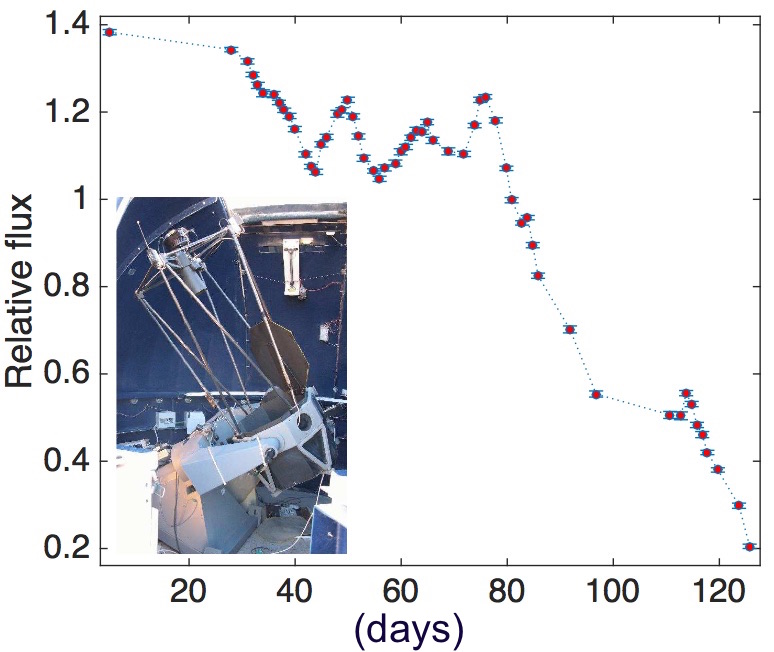In a first-of-its-kind effort to accurately estimate mass of super-massive black holes, researchers led by Prof. Doron Chelouche, are carrying out nightly photo-metric observations at the Wise Observatory with a follow-up analysis using novel image reduction techniques. This project has far-reaching implications for the formation and evolution of supermassive black holes, the extreme physics in the immediate vicinity of such objects, as well as for the use of quasars as standard cosmological candles.
The outlined study can only be accomplished using a large computer with many processors and a fast distributed file system. Specifically, a normal computer would be unable to cope with the influx of data from the telescope, and the demanding computational task of analyzing them.
The attached image shows the telescope in the inset, and an example for a light curve (i.e., the light-intensity variation over time) for a particular object, obtained by Dr. Francisco Pozo-Nuñez, which harbors a black hole at its center. Several papers are in preparation.

